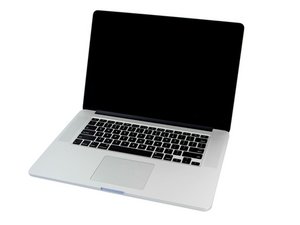Hall Effect / Reed Switch Malfunction
Hi Users.
I just got this Model A1398 EMC 2512 that was supposed to be thrown out, it was a god-send because my early 2008 MBP isn’t really cutting it anymore.
Some liquid was spilled over it some time ago and the SSD and Airport card have been pulled from it, but everything else seems to be working fine except that the screen will frequently (1-2 times per minute on average) go black for couple of seconds and then on again. Using the “ioreg -r -k AppleClamshellState” command I’ve confirmed that when the screen goes black, “AppleClamshellState” switches from No to Yes. The machine also works fine with the Lid closed using en external monitor, further indicating the Hall Sensor as the problem. My first idea was a GPU problem, but using gfxCardStatus I’ve excluded that possibility.
So I want to find a practical solution, I would love to not have to buy a new logic board for it so I’m looking into alternative solutions. If I’m not mistaken, this is the location of the Sensor:

I’ve tested taking a magnet close to it for confirmation. It looks like it’s soldered to the motherboard. I don’t currently have the tools to take this machine apart so I can’t take a look myself at this time.
So, my question is threefold:
- Can I replace the Hall Sensor unit with mediocre soldering skills and a soldering iron?
- And/or, can I turn off input from the sensor into the OS so that it doesn’t cause this issue?
- Or, is there some other solution to make the machine usable that I’m not thinking off?
I can’t find any “MBP Retina Hall Sensors” on Ebay so I’m guessing getting one and replacing it won’t be easy.
Is dit een goede vraag?

 4
4  1
1 

 971
971